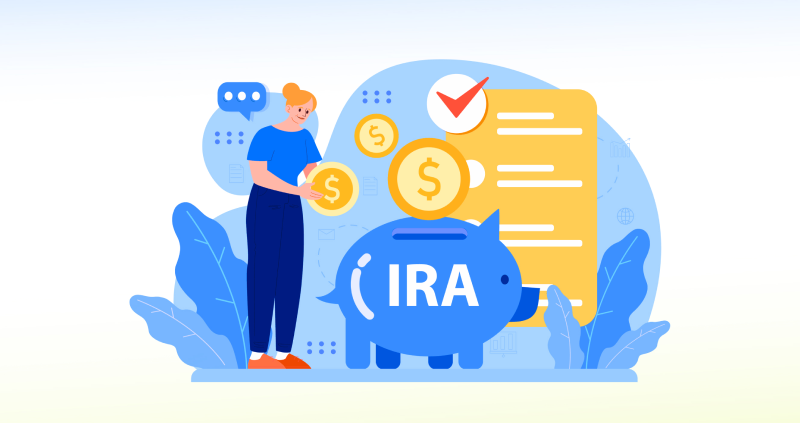How to retire early
The practical steps you can take to increase your savings and start planning for early retirement.
Home > Retirement > How To Retire Early
The practical steps to plan for an early retirement
Key savings accounts that could help achieve your early retirement plans
What you need to know before claiming your Social Security benefits

Planning for an early retirement: All you need to know to get started
An early retirement is something many people dream of, but making that dream a reality requires a lot of work, and the sooner that work starts, the better your odds of retiring early become.
Retiring early allows you to enjoy more of your life while you’re still fit and healthy enough to do so. For the majority of people, this could be any time before the age of 62, when you’re allowed to start claiming your Social Security benefits. However it’s worth remembering that your benefits will be reduced if you claim before your full retirement age, making it an even more appealing option to afford early retirement on your own terms.
Whether you’re planning to retire early, some time before your Social Security payments start, or you want to retire even earlier with enough savings to enjoy a comfortable lifestyle, there are a few key steps you could take to make that future possible.
Step 1. Plan how much you’ll need in savings
If you’re planning to retire early, you’ll need to know how much money you’ll need to save to make it happen. There are two ways to think about this. First, there’s the rule of 25. This suggests that you’ll need 25 times your planned annual spending saved to allow you to retire. That’s not to say you’ll only be able to afford retirement for 25 years — instead, this rule assumes your savings will continue to grow due to interest, meaning you’ll be able to afford a comfortable retirement for as long as you want.
The second rule says that you can take 4% out of your savings during your first year of retirement, before adjusting that percentage rate for inflation every year after. This rule can change depending on how your investments are performing, how much risk you’re willing to take with your wealth, and how the market is faring generally. Learn more about the 4% rule for retirement.
Neither rule is guaranteed to be successful, but they can both be used as a good starting point for your early retirement planning.
Step 2. Sign up to your workplace retirement plan
The easiest way to start saving is by joining your workplace retirement plan. It’s generally advisable to contribute as much as your company is willing to match, and once you’ve reached that threshold, consider adding around 1% more every year. Your HR department will be able to give you more details about how your workplace retirement plan operates. If there is no retirement plan where you work, don’t panic — there are other ways you can save, such as IRA, Roth IRA and SEP, which could all offer similar benefits.
Step 3. Make the most of other workplace benefits
Some companies will let you purchase stock at a discount, and may even be willing to match your contribution. Your HR department will be able to tell you more, but it may be worth considering the potential benefits and weighing that against the company’s financial outlook. If you’re looking to take early retirement, making the most of the options open to you while you’re working could give you the best chance of achieving that goal.
Step 4. Start reducing your debts
When you’re earning a monthly paycheck, paying for things like your mortgage or credit cards all just happen on a schedule. But as soon as you stop earning, these payments will quickly start detracting from your retirement pot, so you could look to eliminate them sooner rather than later if you’re planning to retire early. See which debts you no longer need, and try to consolidate any payments to reduce your interest rate. Debts can soon add up, but if you plan effectively they can disappear just as fast.
Step 5. Don’t be tempted to take early retirement withdrawals
Seeing all that money sitting there can make it tempting to dip in and splash out. But it’s worth remembering: the longer your savings are invested, the more they could grow, and the bigger your retirement pot could become. You should also be aware of any early withdrawal penalties that you might face — for example, you’ll be hit with a 10% charge if you take money out of your 401(k) before you reach age 59½ (unless you qualify for an exception). Don’t think of your retirement pot as your money — think of it as future you’s money, and you’ll be all the more grateful for it later on in life.
Step 6. Invest for potential growth
Investments can sometimes work in your favor if you’re looking to retire early. If you find yourself with spare money after paying off all your planned bills, putting it into an investment account can potentially help grow your funds. While with every investment, you run a risk of losing out as well as gaining, low risk accounts can be a safer way to watch your money grow and boost your early retirement potential.
Step 7. Plan for other sources of income
People are living longer than ever, which means you’ll need more money to support your early retirement plans. Planning multiple sources of income can help cover the cost of your life after you stop working, so it’s worth looking into part-time jobs, side-hustles, holiday homes or rental properties to boost your balance while you can.
Step 8. Use tax-advantaged accounts
Retirement accounts such as a 401(k), an IRA, and a health savings account allow you to spend more of your savings on expenses, instead of taxes. By putting more money in accounts like this, you can see your investment gains compound over time, with more money ending up in your early retirement plans than in your tax payments. You could also consider using a high-yield savings account to boost your savings, while if you’re over 50, you could make a full catch-up contribution to potentially grow your savings quicker.
Step 9. Decide what really matters
Some people might want to live for now, while others will want to plan ahead and enjoy life later. Some young professionals are attracted to the Financial Independence, Retire Early (FIRE) movement with the goal of gaining freedom over their finances. There is no right answer, and for many people a bit of both might be ideal, but it’s good to be aware that if you want to retire early, you will have to make compromises now. Maybe that means downsizing your house, not buying that new car, or limiting your big vacations. Whatever it is, remember why you’re doing it and know that your early retirement dreams will thank you for it later.
How a savings account powered by Raisin could help you plan for an early retirement
When you save with Raisin, your savings are invested in a competitive suite of top savings products, offered by a network of banks and credit unions. This allows you to expand your retirement nest egg and boost your interest potential.
The above article is intended to provide generalized financial information designed to educate a broad segment of the public; it does not give personalized tax, investment, legal, or other business and professional advice. Before taking any action, you should always seek the assistance of a professional who knows your particular situation for advice on taxes, your investments, the law, or any other business and professional matters that affect you and/or your business.


